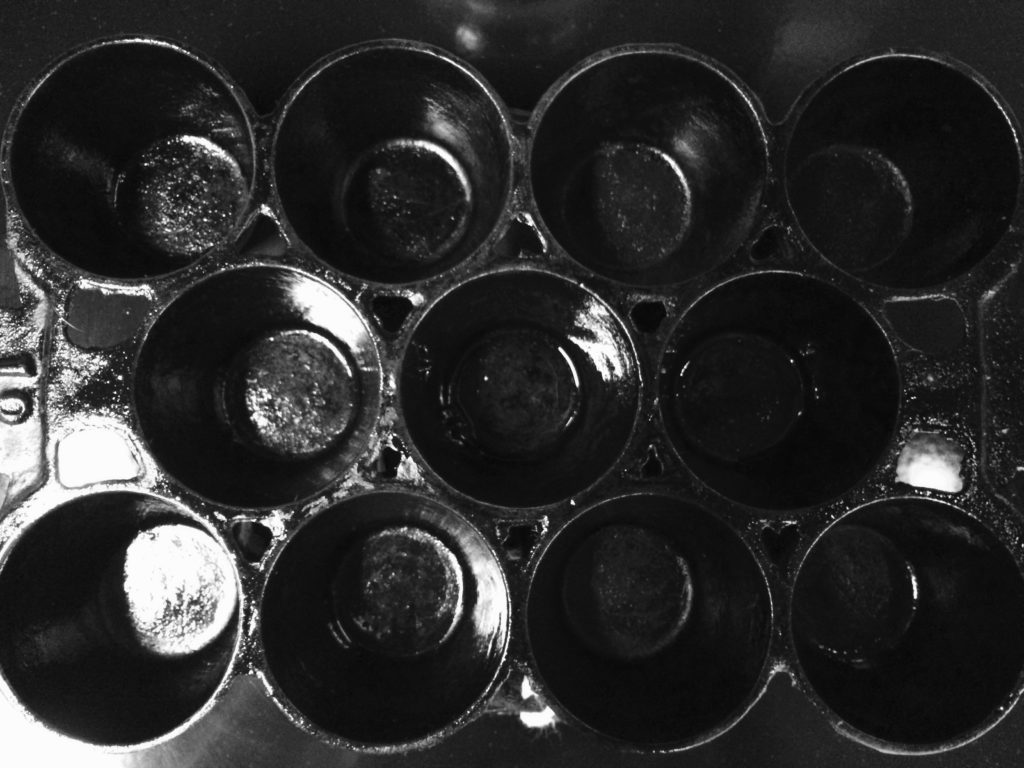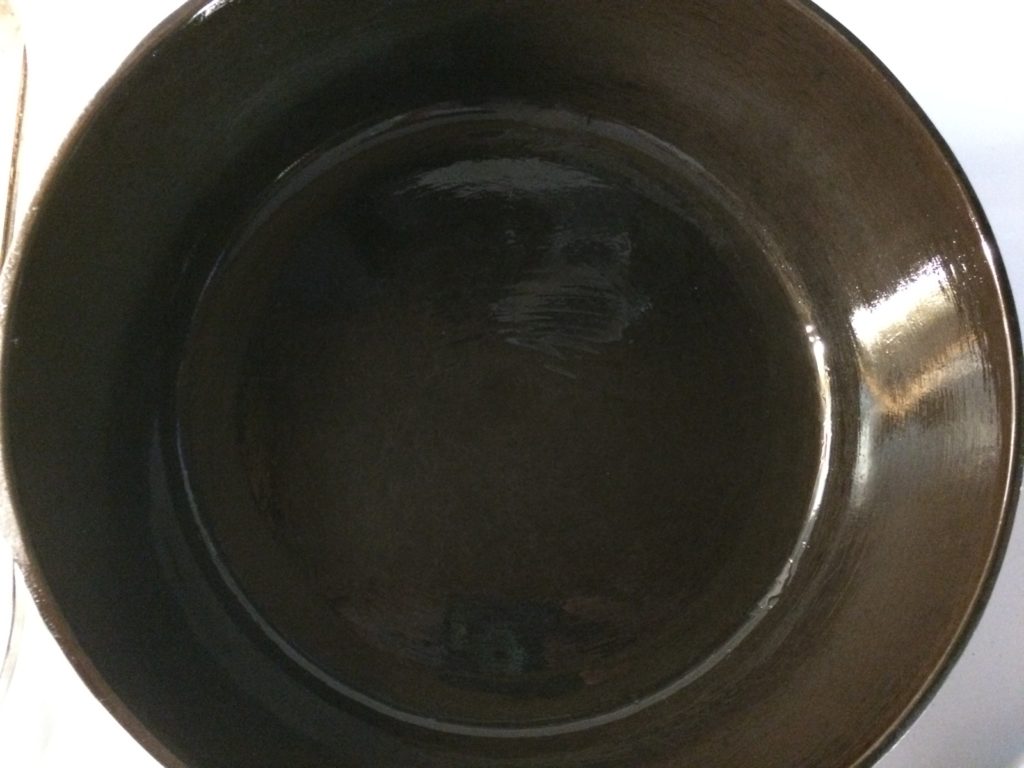The alchemists of the 16th century may have failed to turn base metals into gold, but since 220 A.D., cast iron cookware has been the precious metal of the kitchen. Copper, Teflon, ceramic, steel, aluminum, and Corning Ware have all had their day in the spotlight, but through all those passing fads, the old iron pioneer has kept a place on the hearth. After standing the test of centuries, shouldn’t the superiority of cast iron be settled fact by now?
My late paternal grandmother was an excellent cook. She would never allow anyone around her to go hungry; maybe living through the Great Depression gave her a tender spot for seeing that everyone was fed. I grew up just down the road, and can remember many trips pedaling my old banana-seat bicycle down the highway to her house, knowing there would be something tasty simmering on her stove.
In fact, I might have “accidentally” left my boring lunch at home a time or two, just so I could call Grammie and ask her to bring lunch to school. You see, the lunches I brought from home were always healthy—to the point of being somewhat flavorless at times. Grammie’s lunches, however, were a hungry little girl’s dream come true. There would be savory chips, always a dessert, and maybe even a drink box, along with a far more interesting sandwich than I’d have brought from home. Having my own children now, I see the wisdom of those healthier lunches I got from home, but as a young girl, it was hard to choose health over flavor.
Grammie passed some years ago, and I don’t have much from her estate but there are a few things I consider precious: her pie pans, and her mother’s cast iron muffin pan. Those items are absolute treasures to me.

I haven’t always known or appreciated the secrets of cast iron cookware. I even had a love affair with Teflon. It certainly wasn’t attractive, and when I finally got fed up with flakes in my food due to accidentally scraping the surface, I tossed out all of my Teflon pans.
One fortunate day, I stumbled onto a neighbor’s tag sale, and bought a huge overflowing box of cast iron pans for twenty dollars. It had probably six to eight skillets and two Dutch ovens with lids. Thinking back on it now, I’m not sure how I carried it home! In spite of my best intentions, the box sat sadly neglected in my shop for several years. Eventually, I even sold a few of them … and it was selling them that finally spurred my interest in using them. After listing one old Dutch oven for sale online—I didn’t even set a price because I was so uncertain of the worth of the pan!—and instantly got overwhelming interest in it. That made me decide it might be worth learning what was so special about it, so I decided to keep the piece. I’m so glad I did, because it is my absolute favorite pan now. It’s the GOOD old cast iron. The worth-its-weight-in-gold stuff.

I don’t know exactly why antique cast iron is so much nicer, but I’ve found it to be far superior to what you can buy new nowadays. The old pans were sanded down and smoothed after they were cast, making them somewhat thinner. In practical terms, it means they heat up quicker, are lighter, and just seem much more elegant. All cast iron is somewhat heavy—probably one of their only drawbacks is that some people may have trouble lifting them—but the antique stuff weighs much less, and is far less bulky. New cast iron has an almost gritty, pebble-like feel, compared to the silky smoothness of older pans. I find the non-stick function is far superior using antique pans, too.
So why use cast iron?
- You don’t have to worry about scratching them.
- They hold and distribute heat nicely.
- They give a nice crunch to fried food like potatoes.
- They are virtually indestructible and can be passed down for generations.
- You don’t have to worry about them leaching chemicals into your food like you might with aluminum or Teflon.
- Well-seasoned, they will be the best non-stick pans you’ve ever used (as you can see in the photo below).

So where can you find these antique pans?
- Yard sales
- Estate sales
- Ebay
- Flea markets
What brands or marks should you look for, when buying an antique pan? Griswold and Wagner are two favorite brands among cast iron collectors. Most antiques have size markings, usually in the form of a number incised in the handle or on the bottom of the pan. Some manufacturers used pattern numbers that included both letters and numbers. Often, a quick Google search for specific number/letter combinations or other marks will quickly help you identify the piece you’ve found. eBay provides a tutorial to help identify antique cast iron. If you need more help, try consulting the online guides from expert sources like Cast Iron Collector and The Pan Handler.
When considering vintage pans, remember that cosmetics can be fixed, but you want a pan to be structurally sound. Beware of any chipping or warping. When placed flat on a table, it should not wobble—that’s bad news on your stove top! The surface should feel smooth, and the pans should seem somewhat light for cast iron.
When considering vintage cast iron, remember that cosmetics can be fixed, but you want a pan to be structurally sound. The surface should feel smooth. Avoid chipping, warping, or pans that wobble on a flat surface. Click To TweetAs for the cleaning and care of cast iron, it has a few unique properties, and you must respect them in order to maintain the integrity of any pans you own. This is a helpful, step-by-step pictorial guide to cleaning and maintaining cast iron pans.
I always try to clean my pans while they are still hot. Cast iron has pores that are open when hot, but close again when cold. To keep your non-stick surface intact, you want to clean and re-season (oil) pans when those pores are open. I scrub mine, dry it well, and oil it with coconut or olive oil. It’s important not to leave it soaking in water, and to dry it immediately after cleaning, because cast iron will rust if you do not care for it properly.
So keep your eyes peeled for black gold, and snag up some of the good stuff when you run across it. Your family will thank you when they’re able to pass it on for generations to come!
